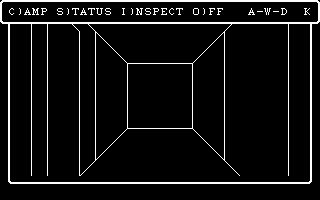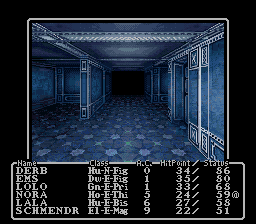Leaderboard
Popular Content
Showing content with the highest reputation on 07/15/2019 in all areas
-
Wow. I'm...finished. I can't believe how quickly I finished that game. I played it pretty much all day long today. Trust me when I say, I've NEVER done that before. Not even as a kid. Usually after an hour or so of any game, I get restless and turn it off to seek entertainment elsewhere. And I did that with this game, too, except after turning it off, I'd get the urge to start it back up again 10 minutes later. Granted, I was cheating by using save states. But in a game when any of your characters can be killed in a surprise attack (or instantly beheaded - thanks, ninjas) no matter how high their level is, at which point the game immediately erases them from your save file, I think using save states to prevent having to start over at the beginning dozens of times is fair. Interestingly, the end credits don't acknowledge the original American designers AT ALL. Not even a "special thanks" credit. If the end credits were all you had to go on, you would never suspect that this game wasn't a 100% Japanese creation. Kind of a dick move there, guys. Although I couldn't bring myself to play the original 1981 Apple II release (unfamiliarity with Apple II emulators and a need to be able to use save states being more of a deciding factor than the graphics), the Super Famicom version adheres very closely to the original's gameplay. It's remarkable how many RPG mechanics still standard today got their start with this game. In many ways, it's the protoform of everything that came after. The following list is copied from the CRPGAddict blog, but these are all things that the first Wizardry did before any other game (once again - in 1981!!) Many famous RPGs series wouldn't incorporate some of these features for years yet to come: Multiple characters in a party Experience points and levels the way we think of them in CRPGs today Multiple foes at the same time A complex magic system (on both the sending and the receiving ends!) Separate spells for mages and priests Tactical combat Multiple types of items--weapons, armor, helms, accessories--that you can find and wield. Items that must be identified Cursed items A full list of D&D-style races and classes Classes restricted based on ability scores Alignments The ability to change classes RESPECT. EDIT: I just noticed the typo in the ending screen. "Proving Grounds of the Mad OverLOAD" Because lord and load are written the same way in katakana...1 point
-
After uploading a zillion Japanese Wizardry guides to the Internet Archive (with still more left to go), I finally decided it was high time I played through Wizardry I. The only problem is that it's a crazy-masochistically-hard game from 1981 that wipes your saves upon party death. Oh, and it looks like this: Hey, it's 1981, remember? Now, I'm no graphics whore, but come on... So anyway, I saw that there was a translated version of the Japanese Super Famicom release of Wizardry I II and III. Which looks like this: So that's what I'm playing. And since it's a console being emulated, save states allow me to not worry about the game erasing my saves. Anyway, the game IS difficult (though I suspect not as difficult as the original Apple II version), but damned if it isn't strangely addicting thus far. In fact, it may well be the difficulty that makes it interesting. Unlike easy-as-$#%^ JRPGs, you can't just cruise through battles hitting attack over and over if you expect to survive, so you're always on your toes and always engaged. And every little tweak to your equipment or spellbook seems like a big deal, since it might just give you that edge you need to survive a bit longer (unlike games like FFVII, for instance, which had a rich and complex system of applying and upgrading materia to everything, and yet seemed ultimately pointless since the game could be easily beaten by ignoring all that and just smashing your way through.) And of course, there's barely any story to speak of - it's the game itself that engages the player. It's interesting to me how Wizardry is such a successful series in Japan, and yet everything about it is the antithesis of typical JRPG game design. But then again, maybe that's not so different from how Western gamers grew up loving Mario games, and yet Western-developed Mario-style platformers are a rarity.1 point


(NP)EnbyAeonGenesisv1.0-0002.thumb.png.bfc9d0cba256435dddd4dad95ee07d61.png)

